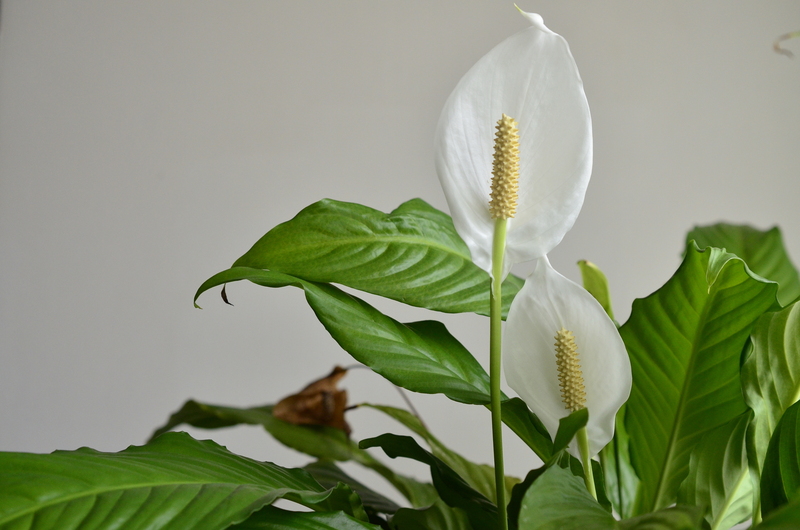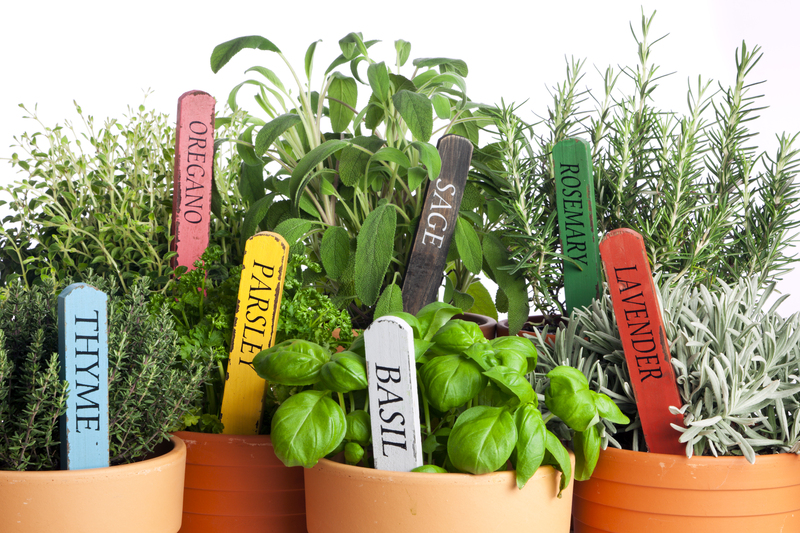Transforming spaces with container gardening
Posted on 08/06/2025
Transforming Spaces with Container Gardening
Container gardening has revolutionized the way people introduce greenery and beauty into their surroundings. Regardless of your available space or your gardening skill level, cultivating plants in containers offers a versatile, creative, and accessible approach for bringing nature into your life. In this comprehensive guide, we'll explore how you can turn dull or cramped areas into lush, thriving sanctuaries using the power of container gardening.
Why Choose Container Gardening to Transform Spaces?
Container gardening is more than just placing a plant in a pot. It's a strategic, adaptable way to elevate any living or working space--whether it's a tiny apartment balcony, a stark office corner, or a sprawling backyard. Here's why container gardening is a game-changer:
- Versatility: Containers can be moved and arranged for optimal sunlight or to refresh your decor.
- Accessibility: Perfect for beginners and experts alike, with minimal equipment required.
- Space Efficiency: Ideal for small spaces, enabling vertical and horizontal planting.
- Soil & Pest Control: You control the soil quality, drainage, and exposure, reducing plant diseases.
- Aesthetic Freedom: Experiment with pot materials, plant colors, and arrangements to suit your style.
- Seasonal Flexibility: Move containers indoors or outdoors as seasons change.
Impactful Benefits of Container Gardening
When you transform your space with container gardens, you're not just improving aesthetics. You're contributing to well-being, local biodiversity, and even improved air quality. Studies show that indoor and outdoor plants can boost mood, creativity, and productivity.

Creative Ways to Transform Spaces with Container Gardens
1. Revamp Balconies & Patios
Balconies and patios are common "blank canvases" for those living in apartments or urban environments. With container gardening, even the smallest balcony can become a vibrant oasis.
- Vertical Gardens: Install shelves or use hanging pots to maximize vertical space.
- Privacy Walls: Tall containers with bamboo, grasses, or small trees can offer natural privacy.
- Themed Groupings: Arrange containers by color or plant type for a cohesive look.
2. Enhance Entryways and Doorsteps
First impressions matter. Placing containers with lush foliage or seasonal blooms by your front door can dramatically boost curb appeal and make your home more inviting.
- Symmetry: Flank your entrance with matching pots for a classic effect.
- Seasonal Swaps: Change out your container plants with the seasons for ongoing interest.
- Unconventional Pots: Use old boots, barrels, or baskets to add personality.
3. Urban Gardening: Rooftops and Small Yards
If you're short on ground soil, rooftop and courtyard spaces are prime locations to unlock container garden magic. Raised beds, large tubs, and grouped pots can create a multi-layered, lush feel--perfect for both private enjoyment and entertaining guests.
4. Indoor Green Sanctuaries
Don't limit yourself to outdoor spaces. Transform your living room, kitchen, or office with indoor container gardens. Choose plants that thrive indoors, such as pothos, succulents, peace lilies, or herbs for year-round greenery and improved air quality.
5. Community and Shared Spaces
Community gardens, office lounges, or school yards can all benefit from the vibrancy and relaxation that container gardens bring. They're easy to maintain, rearrange, and can encourage group participation.
Planning Your Container Garden for Maximum Impact
The best container gardening transformations begin with thoughtful planning and design. Consider these essential guidelines:
Assessing Your Space
- Light Conditions: Identify which areas receive full sun, partial shade, or are mostly shaded. Choose plants suited for each location.
- Climate & Weather: Consider wind, rainfall, and seasonal temperature swings.
- Accessibility: Leave room for movement, watering, and maintenance.
Choosing the Right Containers
The type of container you pick can make a huge difference in both appearance and plant health. Here are some considerations:
- Material: Options range from terracotta, ceramic, and plastic to wood and metal. Each has pros and cons related to aesthetics, weight, drainage, and insulation.
- Size: Ensure containers are large enough for root development. Bigger pots retain moisture better and reduce watering frequency.
- Drainage: Good drainage holes are a must. Consider adding stones at the bottom to aid water flow.
- Mobility: Consider lightweight pots or those with wheels for easy rearrangement.
Soil and Fertilizer Tips
Use a high-quality potting mix rather than garden soil for optimal drainage and nutrients. Many mixes are enriched with slow-release fertilizers. Container plants need regular fertilization--liquid feeds work well for most annuals and edibles.
Selecting Plants for Container Gardening Success
Plants for container gardens can range from edible herbs and vegetables to shrubs, houseplants, or stunning annual and perennial flowers. Consider:
- Sun-Loving: Petunias, geraniums, tomatoes, peppers, lavender.
- Shade-Tolerant: Ferns, impatiens, hostas, peace lilies.
- Low Maintenance: Succulents, cacti, ivy, ZZ plant.
- Edibles: Lettuces, chives, basil, mint, strawberries.
Design Principles: Creating Harmony and Visual Appeal
Transform container arrangements into living artworks by following a few basic garden design principles:
The "Thriller, Filler, Spiller" Formula
- Thriller: The largest, most eye-catching plant, usually placed in the center or back of a container.
- Filler: Midsize, bushy plants that surround the thriller and add body.
- Spiller: Trailing plants that cascade over the edges for added drama and softness.
Color Combinations and Texture
Mix leaf shapes, plant heights, and flower colors for dynamic contrast. Choose complementary or analog colors for harmony, or go bold with contrasting hues.
Repetition and Rhythm
Repeat similar containers or plant themes throughout a space to create unity and guide the eye from one area to the next.
Seasonal Container Gardening Strategies
A key advantage of gardening in containers is seasonal adaptability. Rotate annuals, bulbs, or themed plant combos to keep your garden looking fresh all year.
- Spring: Bulbs like tulips and daffodils, violas, pansies, and early herbs.
- Summer: Sun-loving annuals, vegetables, aromatic herbs.
- Autumn: Ornamental grasses, chrysanthemums, kale, and colored foliage plants.
- Winter: Evergreens, holly, cyclamen, or decorative branches.
Troubleshooting: Common Container Gardening Challenges
Even the best container gardeners face occasional obstacles. Here's how to overcome common issues:
- Over- or Underwatering: Check soil moisture regularly. Most containers dry out faster than ground beds. Use self-watering planters or mulch to retain moisture.
- Pests and Diseases: Inspect plants frequently. Remove dead leaves, and consider organic sprays or introducing beneficial insects as needed.
- Leggy or Unhealthy Growth: Rotate containers for even light, prune regularly, and fertilize according to plant needs.
- Root Bound Plants: Repot every year or two, dividing perennials as needed to maintain health.
Eco-Friendly and Sustainable Container Gardening
Transforming your space doesn't mean compromising the environment. Embrace sustainable approaches in your container gardening projects by:
- Upcycling: Repurpose old buckets, bowls, or baskets as unique plant containers.
- Organic Practices: Use natural fertilizers and pest controls to protect local ecosystems.
- Water Conservation: Install drip irrigation, use saucers to catch runoff, and group thirsty plants together.
- Native Plants: Choose native and pollinator-friendly species for lower care and greater biodiversity.
Step-by-Step: Starting Your Own Container Garden
Ready to transform your space with a container garden? Follow this straightforward process for lush, rewarding results:
- Decide on Location: Indoors or outdoors? Sun or shade? Measure available space.
- Select Containers: Choose pots with adequate size and drainage. Clean any recycled containers thoroughly.
- Prepare Soil: Fill with a high-quality potting mix, leaving room for watering at the top.
- Arrange Your Plants: Use the "thriller, filler, spiller" approach or create groupings based on colors and textures.
- Water and Feed: Water thoroughly after planting; apply fertilizer as needed per plant variety.
- Maintain and Enjoy: Monitor moisture, prune for shape, and rotate pots for even growth.

Innovative Container Garden Ideas for Inspiration
- Kitchen Herb Garden: Keep fresh basil, rosemary, and parsley handy in sun-filled window pots.
- Succulent Gallery: Arrange mixed succulents in colorful bowls or vintage teacups for a modern indoor display.
- Edible Walls: Create a vertical garden with strawberries, lettuces, or compact cherry tomatoes.
- Butterfly & Bee Stations: Choose native flowering plants in containers to attract pollinators.
- Centerpiece Displays: Feature a dramatic potted tree or cluster of seasonal blooms as a patio focal point.
Conclusion: The Power of Container Gardening to Transform Spaces
Container gardening stands out as a flexible, creative, and rewarding way to refresh any living space--indoors or out. By embracing varied planters, diverse plant choices, and smart design principles, anyone can turn overlooked areas into vibrant green retreats. Whether your aim is to beautify a balcony, grow edibles in an urban setting, or experiment with seasonal designs, container gardens offer virtually limitless possibilities.
Start small or go big, and let your imagination guide you. With the right tools and ideas, you can change your surroundings and boost your well-being--one pot at a time.
Ready to Start Transforming Your Space?
Gather your favorite containers, pick out some plants, and experience the remarkable impact of container gardening today!



